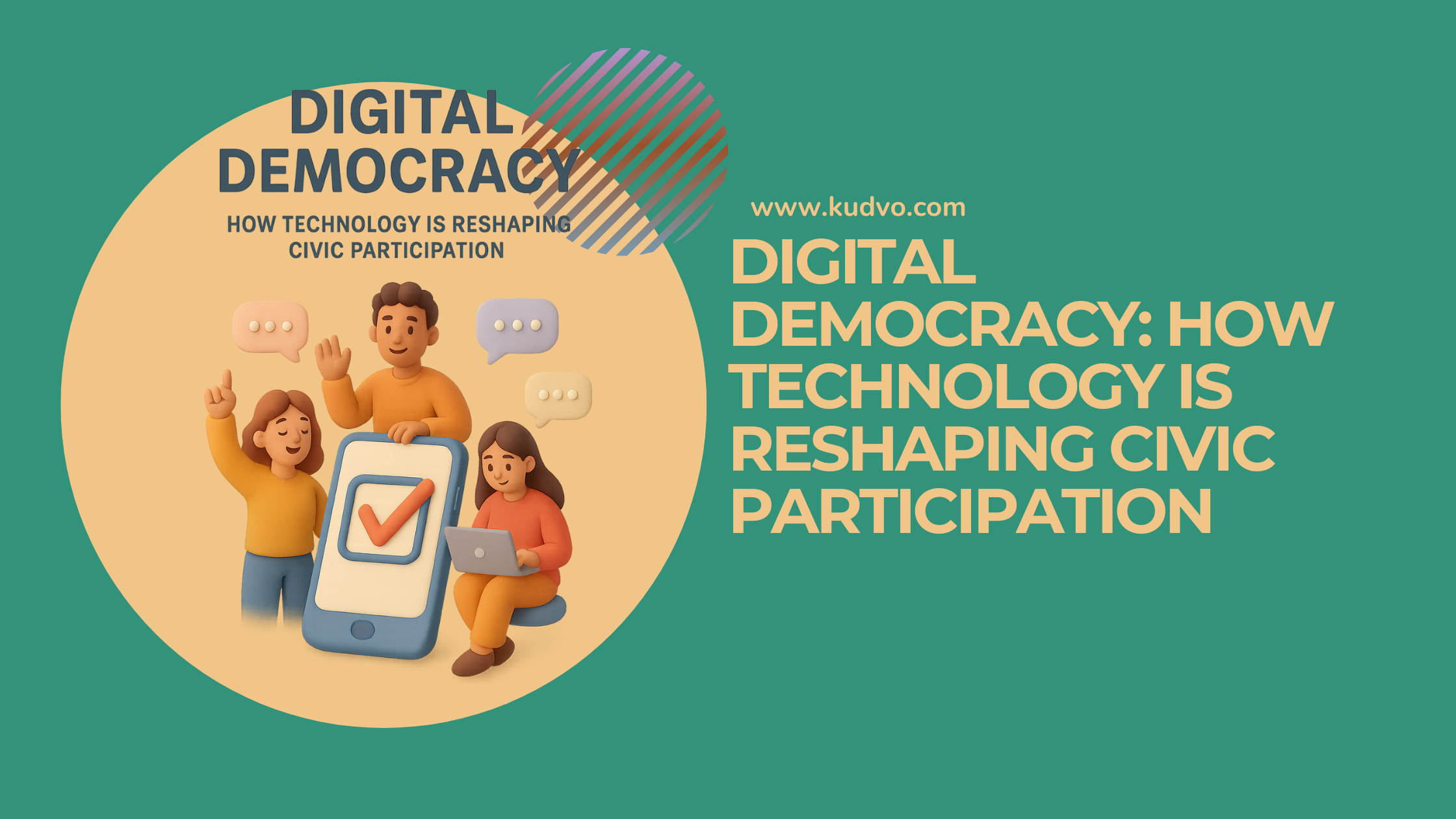Digital Democracy: How Technology Is Reshaping Civic Participation
Introduction
When was the last time you engaged in a civic decision—signed a petition, joined a town hall, or voted? Was it in person or online?
In today's connected world, technology is revolutionizing how people engage in democracy. From smartphones to social platforms, civic participation no longer requires physical presence. Instead, it's happening in real-time, from anywhere with Wi-Fi.
In this post, we’ll explore how digital tools are opening doors for more people to get involved in civic life—transparently, securely, and efficiently. Whether you're a public leader, activist, or citizen looking to make your voice heard, this guide is for you.
Looking for a digital voting platform to empower your community? Kudvo offers modern tools to make secure, inclusive decision-making easier than ever.
1. What Is Digital Democracy?
Digital democracy refers to the use of technology to enhance or replace traditional democratic processes. It allows individuals to:
Vote online
Participate in digital town halls
Sign e-petitions
Engage with policy proposals through interactive tools
Unlike traditional systems, digital democracy removes many barriers:
No need to travel to polling stations
Real-time communication with elected officials
Broader reach for marginalized or remote communities
Stat: A 2023 study by Pew Research found that 62% of people aged 18–34 prefer online tools for civic engagement over traditional methods.
2. The Tools Powering Digital Democracy
Here are the key technologies driving the shift:
📩 Online Voting Platforms
Secure, user-friendly voting portals that enable participation from anywhere.
Used by schools, governments, and corporations alike.
Example: Kudvo has helped hundreds of organizations run secure digital elections, boosting voter turnout by up to 40%.
🗳️ E-Petitions & Citizen Portals
Platforms like Change.org or government-hosted portals make it easy to gather support for causes.
Some governments have formalized processes where petitions reaching a threshold trigger official responses.
📱 Social Media & Civic Apps
Real-time updates from leaders.
Platforms like Twitter and Instagram double as political tools, especially during elections.
🧠 AI & Data-Driven Policy Feedback
Citizens can now give structured feedback through apps that aggregate data for policymakers.
Governments use these insights to prioritize policies based on real public interest.
3. Benefits of Tech-Driven Civic Participation
Here’s how digital democracy creates stronger, more inclusive systems:
✅ Greater Accessibility
Removes physical, economic, or geographical barriers.
Gives people with disabilities or limited mobility a voice.
✅ Transparency & Accountability
Digital records allow for auditability and trust.
Real-time data keeps elected officials accountable.
✅ Youth Engagement
Younger generations, digital natives by nature, engage more with civic matters when tools meet them where they are—online.
✅ Faster Response & Feedback Loops
Policy feedback and town hall input can be gathered instantly.
Speeds up the process of addressing community needs.
4. Challenges and Considerations
While digital democracy holds promise, it also brings challenges:
Security & Privacy: Online voting must be encrypted and verifiable.
Digital Divide: Not everyone has equal internet access or tech literacy.
Misinformation Risks: Social platforms can amplify false narratives.
Voter Trust: Transparency in how digital tools are used is critical for legitimacy.
Tip: Choose platforms like Kudvo that offer secure, compliant tools with voter anonymity and end-to-end transparency.
Conclusion
Digital democracy is no longer a futuristic idea—it’s here, reshaping how we participate, engage, and lead in civic life.
To recap:
Technology is expanding access to democracy through voting apps, e-petitions, and digital platforms.
It empowers more people—especially youth and remote voters—to have their voices heard.
Though challenges exist, the benefits of inclusivity, transparency, and efficiency are too powerful to ignore.
Takeaway:
The future of democracy is digital—and it’s up to us to use these tools wisely. Whether you're running a local vote or launching a grassroots petition, embracing digital platforms like www.kudvo.com can help you build a stronger, more participatory community.
